Author: Marshall Schott
Brewer: Michael Rhodes
I recently spoke at the 2nd annual New Zealand Home-brewers’ Conference (NZHC) as a guest alongside Gordon Strong and Michael Tonsmeire. Given the nature of what Brülosophy generally does, I struggled to come up with a good topic to spend an hour talking about for the session I committed to, giving a lecture about how to make better beer just feels a bit antithetical to what I’m all about. I shared this with the organizers and mentioned in passing how, if I had it my way, my session would be more of an interactive xBmt where attendees would have the opportunity to participate in something fun and interesting. The organizers were fully on-board and, given the logistical inconvenience of getting from Fresno, CA to Nelson, NZ, hooked me up with a local Kiwi homebrewer called Michael Rhodes who they assured me would be up to the task.
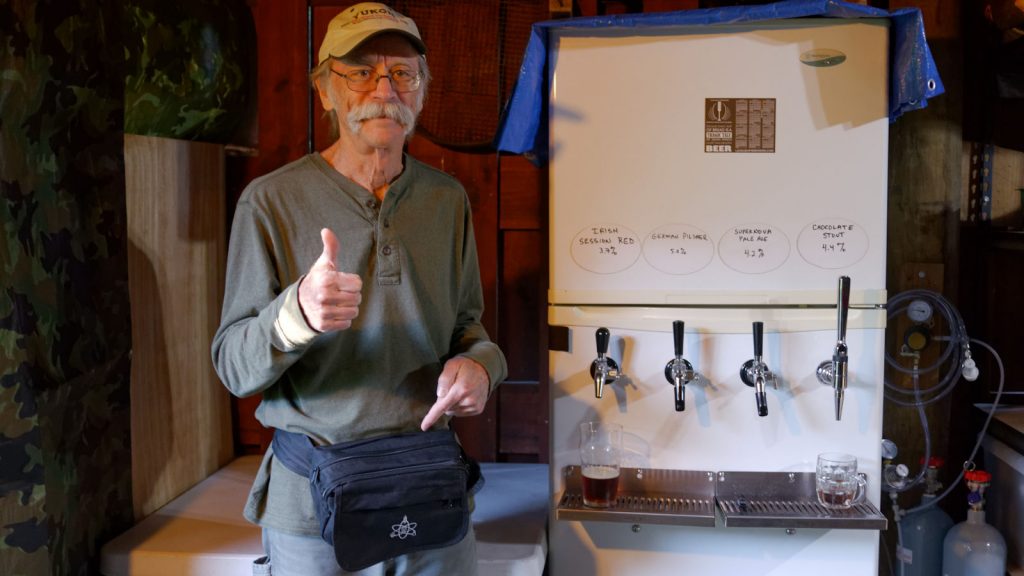
I shared with Michael the difficulty I’d experience trying to collect triangle test data with larger groups and proposed a slightly different xBmt approach that would make things a bit simpler on us. Rather than focusing purely on whether tasters can distinguish a difference between two beers, which demands each taster to be served 3 samples of 2 beers, we designed an xBmt that would require a single brew with tasters being served 2 sample for evaluation.
Inspired by prior research demonstrating expert wine tasters served white wine that had been colored red used descriptors most common for red wine, Michael and I went the slightly deceptive route for this xBmt. Rather than brewing 2 different beers, we thought it would be interesting to see how evaluations of a single pale beer compared to evaluations of the same exact beer made to look drastically different in the glass.
| PURPOSE |
To evaluate the impact appearance has on tasters’ evaluations of 2 beers from the same batch where one was made to look darker with a flavorless colorant while the other remained pale.
| METHODS |
Wanting to avoid an overly characterful beer, we settled on a more regionally appropriate version of my very simple Blonde Ale using grains from New Zealand’s highly lauded Gladfield Malt, Kiwi hops, and… well, it took some finagling, but we did get the WLP029 German Ale/Kölsch yeast the recipe calls for.
The Good Count Kiwi Blonde Ale
Recipe Details
| Batch Size | Boil Time | IBU | SRM | Est. OG | Est. FG | ABV |
|---|---|---|---|---|---|---|
| 5.5 gal | 60 min | 22.5 IBUs | 4.5 SRM | 1.050 | 1.010 | 5.2 % |
| Actuals | 1.05 | 1.01 | 5.2 % | |||
Fermentables
| Name | Amount | % |
|---|---|---|
| Gladfield American Ale Malt | 8.812 lbs | 76.63 |
| Gladfield Vienna Malt | 1.125 lbs | 9.78 |
| Gladfield Wheat Malt | 1.125 lbs | 9.78 |
| Gladfield Sour Grapes Malt | 7 oz | 3.8 |
Hops
| Name | Amount | Time | Use | Form | Alpha % |
|---|---|---|---|---|---|
| Pacific Jade | 8 g | 55 min | Boil | Pellet | 13.3 |
| Wakatu | 7 g | 25 min | Boil | Pellet | 6.1 |
| Kohatu | 13 g | 10 min | Boil | Pellet | 7.3 |
| Wakatu | 7 g | 10 min | Boil | Pellet | 6.1 |
| Wakatu | 7 g | 5 min | Boil | Pellet | 6.1 |
Yeast
| Name | Lab | Attenuation | Temperature |
|---|---|---|---|
| German Ale/Kolsch (WLP029) | White Labs | 75% | 65°F - 69°F |
Notes
| Water Profile: Ca 65 | Mg 8 | Na 5 | SO4 58 | Cl 58 |
Download
| Download this recipe's BeerXML file |
A couple days prior to brewing, Michael made a yeast starter to ensure good viability.
Michael brewed 2 batches of the same beer on separate Grainfather Connect setups, as they’re designed for 5 gallon batch sizes and we wanted to yield 2 kegs of beer. He started off by collecting his strike water, which added minerals to while it was heating to the proper temperature.
Once strike temperature was reached, the grain was gently added in the hot water, after which Michael checked to ensure the target mash temperature of 153°F/67°C was reached.
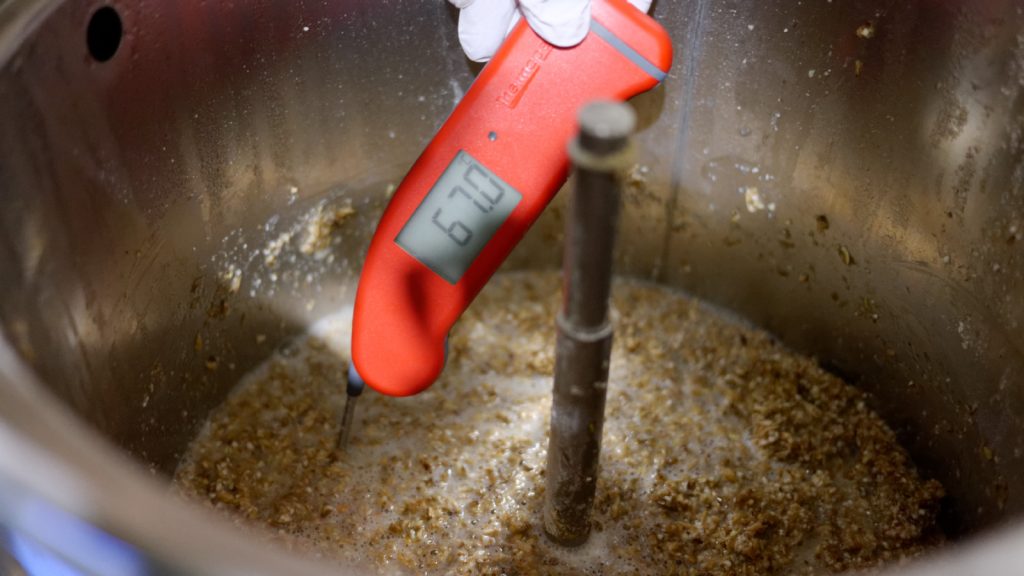
Each batch would undergo a 60 minute rest, the Grainfather continuously recirculating to improve efficiency and maintain consistent temperature throughout the mash.
Approximately 15 minutes into either mash, Michael pulled samples to measure the pH. Close enough, particularly since the worts would be combined in the fermentor.
When each rest was complete, the Grainfather performed a traditional fly sparge to rinse the sweet goodness from the mash.
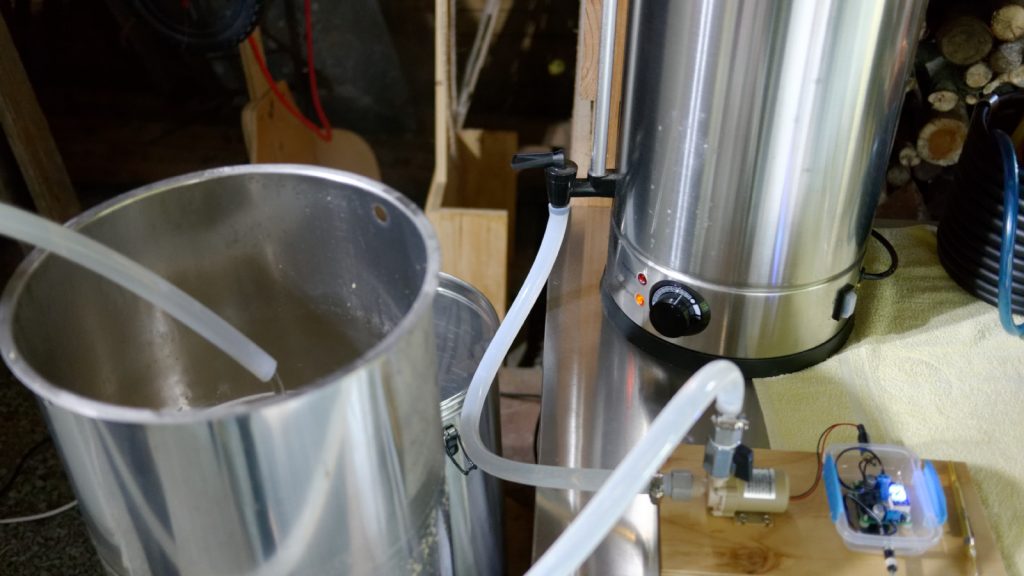
During the sparge step, Michael measured out the hops in preparation for the boil.
With the sparge complete, the worts were boiled for 60 minutes, hops being added to each as stated in the recipe, then the wort was chilled via the counterflow chiller included with the Grainfather.
The worts were combined in a single large Malt Mechanics fermentor as they exited the CFC.
A refractometer measurement at this point revealed the wort clocked in at a slightly higher than usual 13° Brix, or around 1.052 OG.
With the wort chilled to our target fermentation temperature of 65°F/18°C, Michael hit it with a dose of pure O2 then pitched the yeast starter. Fermentation activity was noticed the following day and continued the next few days.
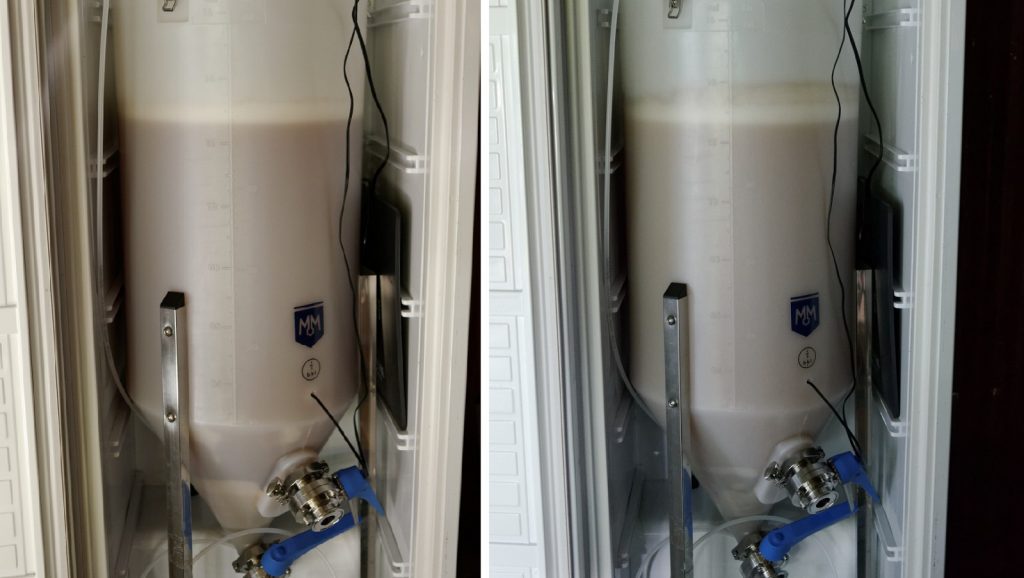
At 5 days post-pitch, the temperature was gradually raised to 68°F/20°C to encourage good attenuation and clean-up of any undesirable fermentation byproducts. The beer was left alone for another 5 days before Michael returned to take a hydrometer measurement that showed FG had been reached.
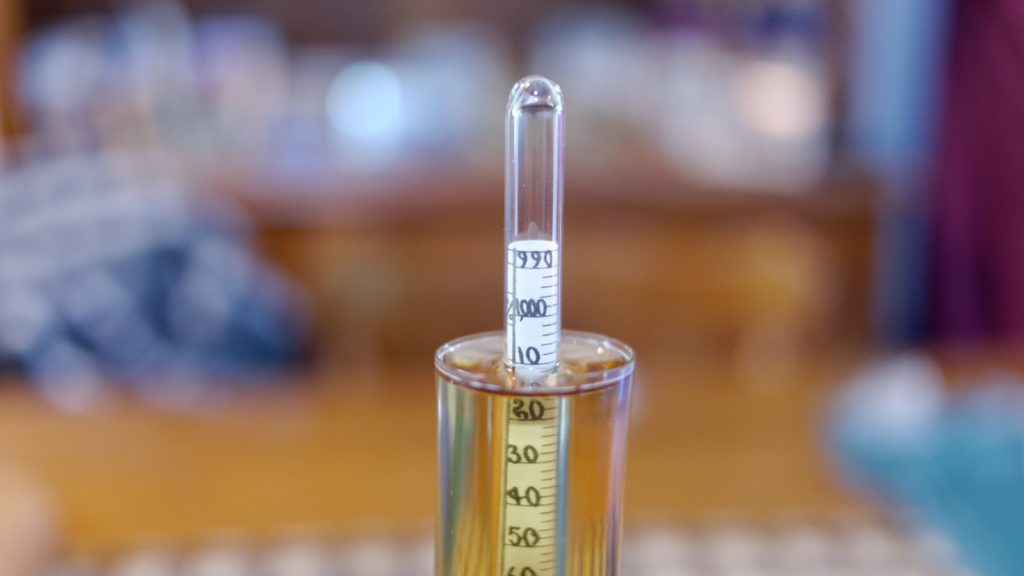
Michael proceeded to cold crash the beer and fine with gelatin.
Finally, it was time to turn 1 beer into 2! Our goal being to make these beers look as different as possible without impacting other characteristics, we did some research and decided to dose half with Sinamar up to approximately 33 SRM using 136 grams of the purportedly flavorless colorant. Michael added the Sinamar to one keg just before racking the beer over while the other half was left alone when kegged.
In order to ensure homogenization of the Sinamar, Michael gently agitated the keg, which he repeated with the non-dosed keg for the sake of keeping things equal between them. The beers were put on gas in Michael’s kegerator where they were left to condition and carbonate for 9 days before he force transferred each to serving kegs, as this would allow him to bring them to the event without stirring up anything that had settled to the bottom of the initial kegs. After another 3 days, the time had come to serve these very different looking beers to unsuspecting conference attendees.
| RESULTS |
In attendance of the data collection session were 33 conference-goers, all completely blind to both the variable of investigation as well as the style of beer being served; 4 of these people were pulled aside for a little something special I’ll get to in a bit. The 28 other attendees were served both versions of the Blonde Ale consecutively, half receiving the pale version first while the other half initially evaluated the dark version. Participants were instructed to stay silent while completing identical digital surveys for each beer. What follows is a graphical look a participants responses to questions on both surveys.
Tasters were first asked to rate the level of perceived hoppiness on a 0 to 5 Likert scale where 0 meant they detected no hop character and 5 indicated extreme hoppiness.
Next, tasters were instructed to select from a simple list of hop descriptors the one they felt was most prominent in each beer.
Tasters were the asked to rate the malt intensity in each sample on the same 0-5 scale.
Common malt descriptors were provided and participants were instructed to select the one they perceived most strongly in either beer.
As a measure of yeast and fermentation characteristics, tasters were asked to rate the perceived dryness of the beers.
Again, from a list of common yeast/fermentation characteristics, participants were instructed to select the one they felt was strongest in each beer.
Following evaluation of the individual characteristics, tasters were asked to select the one they felt was most prominent in either beer.
Finally, participants were asked to write-in for each sample a single style of beer they thought it most resembled.
At this point, it might be easy to presume the differences observed are a real function of an actual disparity between the beers, that the Sinamar imparted more than just a darker color but some flavor of its own as well. Without some triangle test data, which is tough to gather in a seminar type of situation, there’s really no good way to tell if responses were due to appearance or flavor differences. But out of curiosity, I tried…
Recall the small group of attendees I pulled aside at the beginning of my session, all were blindfolded prior to being served their samples, which came to them in a more traditional triangle test (attendees who had already completed the original evaluations assisted in serving them). To keep things interesting, as it was a conference seminar after all, two of these people were served 3 samples of the same beer, either the pale or the dark version, and while both struggled to identify a unique sample, neither reported them as being the same. The other two participants were served proper triangles, one with 2 pale and 1 dark samples, the other with 1 pale and 2 dark samples. Both of these tasters were unable to accurately identify the unique beer, indeed too small of a sample size to make any solid conclusions, but interesting nonetheless.
My Impressions: I sampled both beers a few minutes before my session began and actually experienced a slight tinge of anxiety as I felt they were quite obviously different in terms of flavor. No surprise, the pale version tasted like a Blonde Ale minimally hopped with Kiwi varieties while in the dark version I perceived notes of chocolate with whisper of roast. I performed a single triangle test on myself when attendees were evaluating their beers, certain I would get it right, but as soon as my eyes closed and I was forced to rely solely on my other sense, the differences I thought existed between the beers disappeared and I ended up making the wrong selection.
But wait, there’s more!
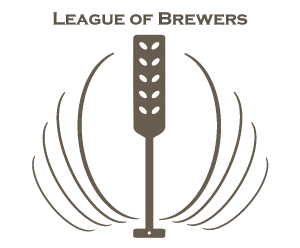 Mike Stringer, one of the NZHC organizers who happens to also run Nelson’s League Of Brewers Brew Supplies, offered to take the leftover beer and collect more triangle test data with patrons of his shop. To ensure blindness, Mike required all participants to wear a blindfold while completing the evaluation. In all, he had 13 people of varying levels of experience participate take the triangle test, which on its own would require 8 correct responses to achieve statistical significance, though only 7 tasters accurately chose the unique sample (p<0.05; p=0.10). Combining this with the data from my NZHC session leaves us with 15 total participants with an expected 9 accurate selections and only 7 actual correct selections (p<0.05; p=0.20), which suggests that despite the large amount used, the Sinamar addition was not enough for participants to be able to reliably distinguish between the beers.
Mike Stringer, one of the NZHC organizers who happens to also run Nelson’s League Of Brewers Brew Supplies, offered to take the leftover beer and collect more triangle test data with patrons of his shop. To ensure blindness, Mike required all participants to wear a blindfold while completing the evaluation. In all, he had 13 people of varying levels of experience participate take the triangle test, which on its own would require 8 correct responses to achieve statistical significance, though only 7 tasters accurately chose the unique sample (p<0.05; p=0.10). Combining this with the data from my NZHC session leaves us with 15 total participants with an expected 9 accurate selections and only 7 actual correct selections (p<0.05; p=0.20), which suggests that despite the large amount used, the Sinamar addition was not enough for participants to be able to reliably distinguish between the beers.
| DISCUSSION |
I think it goes without saying that the results from my session at the New Zealand Homebrewers Conference, given the way in which the data was collected, may not necessarily be tremendously valid. That said, the findings were congruent with prior research showing that appearance has a demonstrable impact on what people perceive, or think they perceive, so perhaps our effort wasn’t completely in vain. While it was pretty obvious some participant responses were likely influenced by their hunch as to what I was up to, the fact most chose descriptors for the pale and dark samples that align with beers of those colors suggests there’s something more at play than just aroma, flavor, and mouthfeel.
On the other hand, Mike Stringer did his best to ensure everyone who participated in the triangle test at his homebrew shop were neither aware of the variable nor capable of actually seeing the beers– he blindfolded them! And yet, despite their obvious difference in appearance, tasters who couldn’t see the beers could not tell them apart to a reliable degree. From this, it’s reasonable to extrapolate that the description provided by the attendees of my session when doing the side-by-side comparison were rather heavily influenced by the way the beers looked. To put it simply, the book was judged by its cover.
One last observation I found rather curious– not a single taster, all of whom are presumably experienced beer drinkers given their attendance at NZHC, accurately identified the unadulterated beer as a Blonde Ale, the style it was designed to be. Sure, the person who thought it was a Cream Ale got close, but I think most would agree the two most popular selections, Pale Ale and Light Lager, are quite a bit different than a Blonde Ale. I tasted the base beer beforehand and thought it tasted like a rather solid example of a Blonde Ale, one I felt certain I’d never mistake for a hoppier Pale Ale or crisp lager. But what if I hadn’t known? Did my awareness influence how I experienced the beer? My hunch is growing stronger by the day…
A huge thanks to Michael Rhodes for brewing the beers for this xBmt, Mike Stringer for assisting with the data collection, and all of the League of Brewers Brew Supply customers who participated in the triangle test!
If you have thoughts about the impact appearance has on perception or this xBmt in general, please don’t hesitate to share them in the comments section below!
Support Brülosophy In Style!
All designs are available in various colors and sizes on Amazon!
Follow Brülosophy on:
FACEBOOK | TWITTER | INSTAGRAM
If you enjoy this stuff and feel compelled to support Brulosophy.com, please check out the Support Us page for details on how you can very easily do so. Thanks!

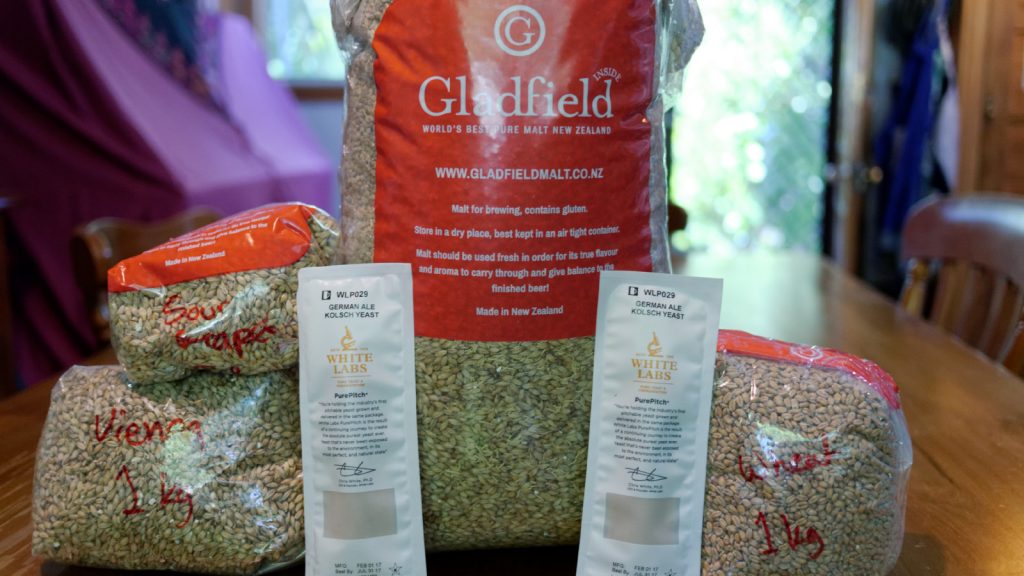
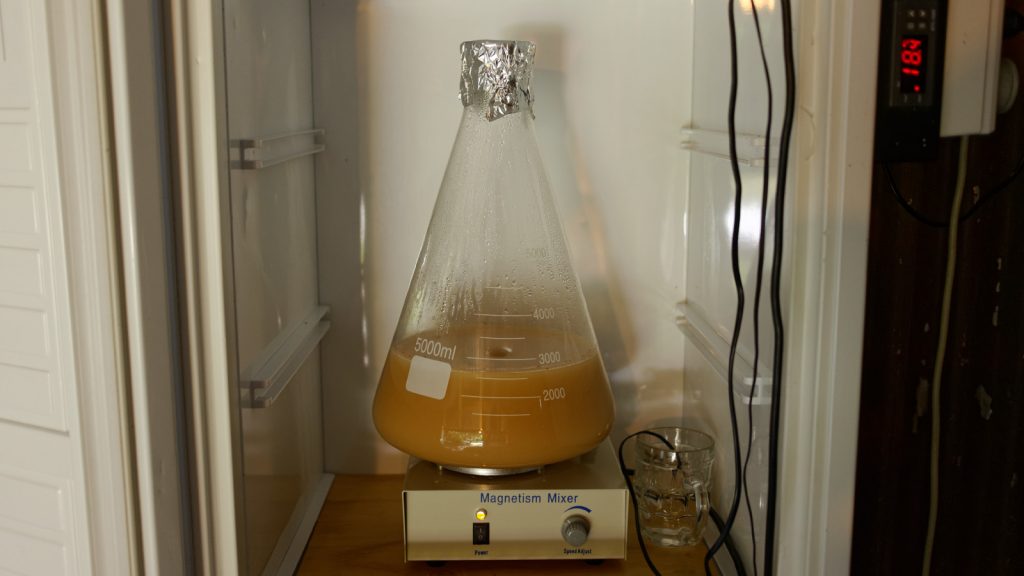
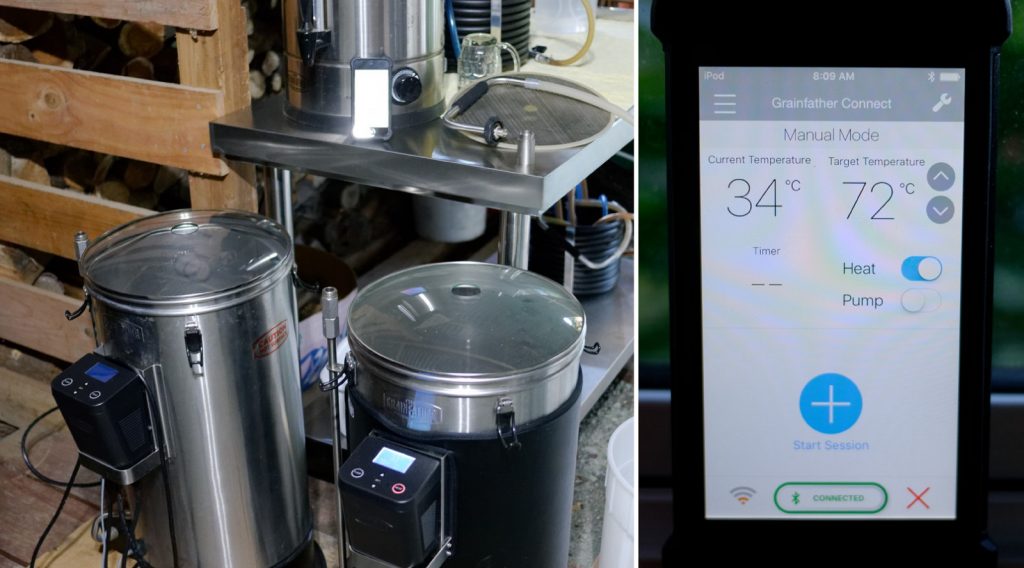
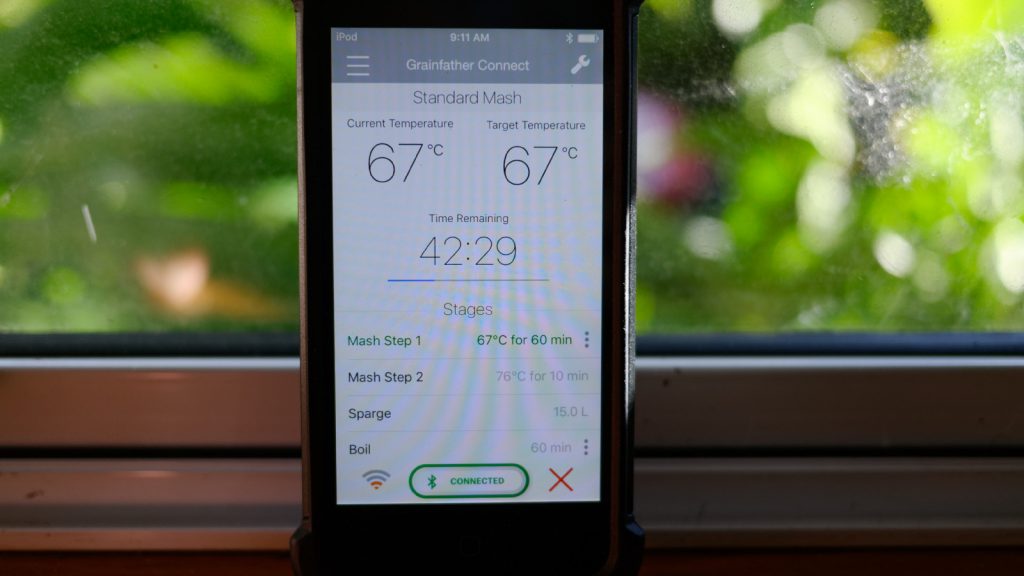
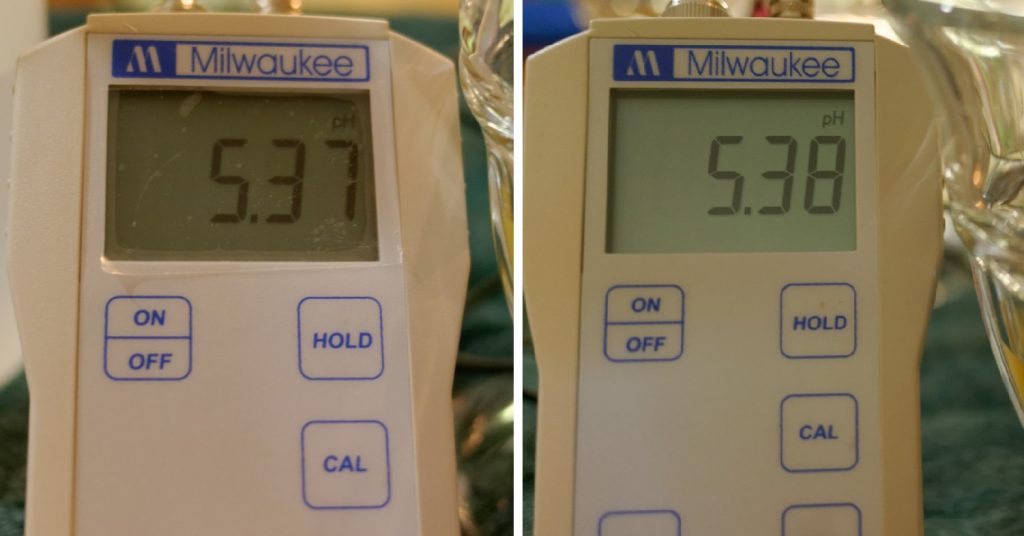
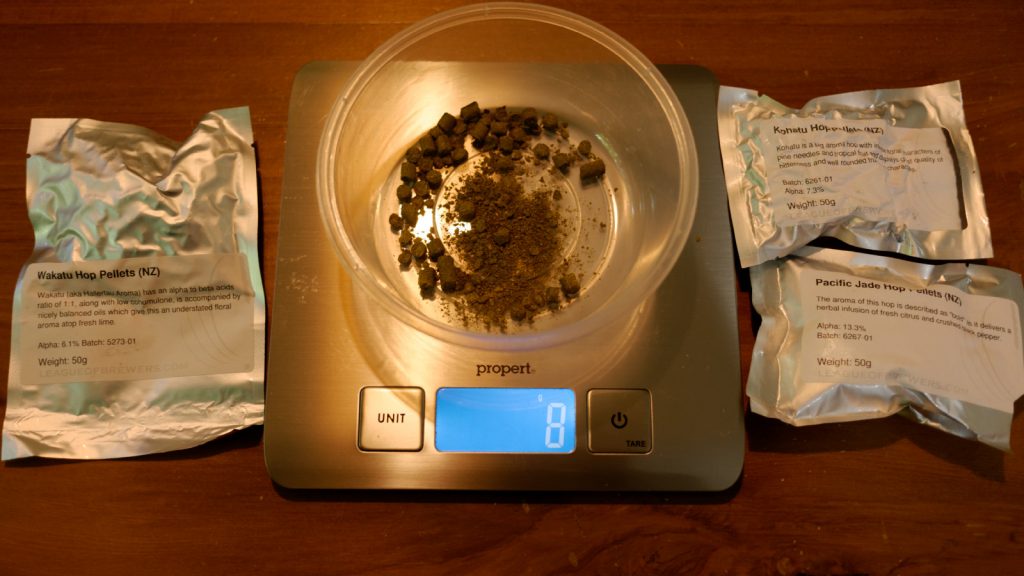
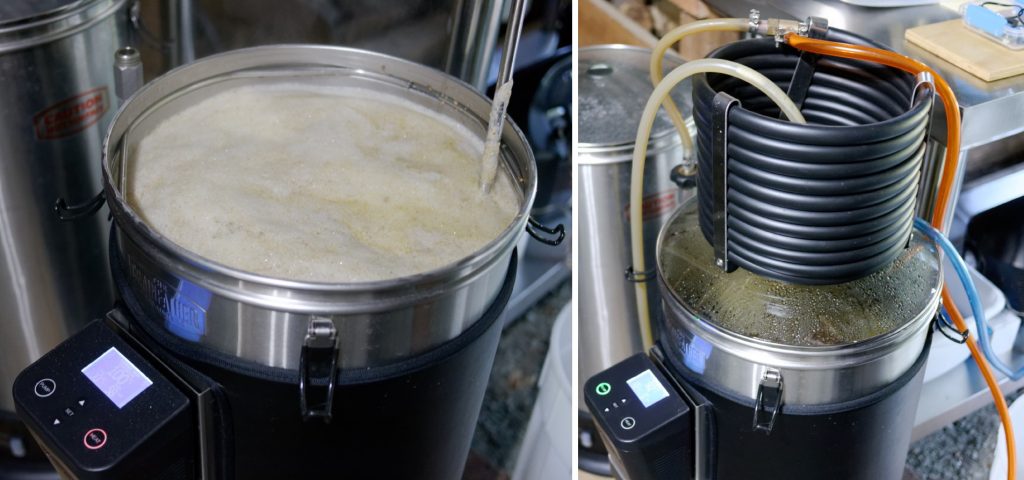
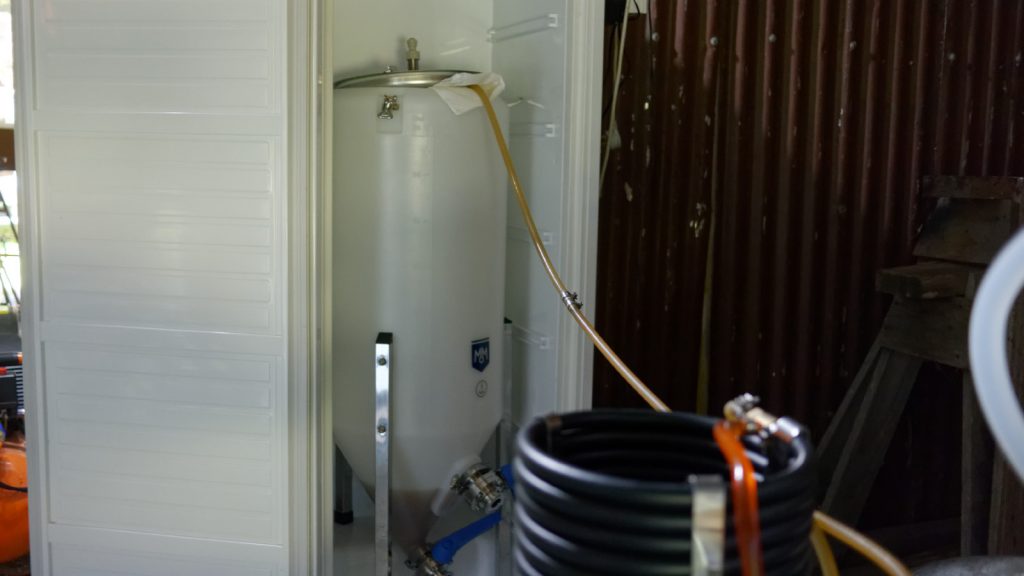
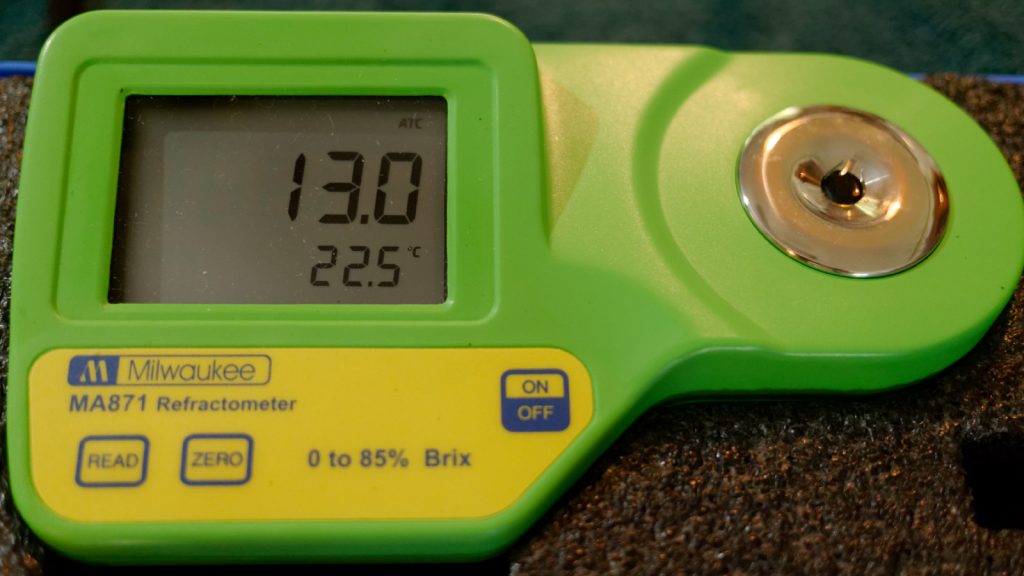
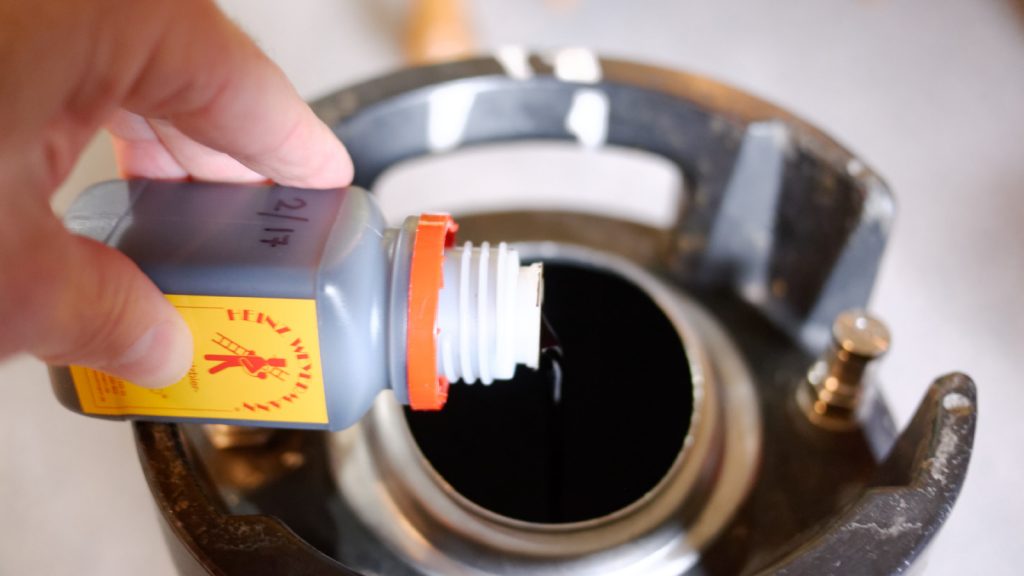
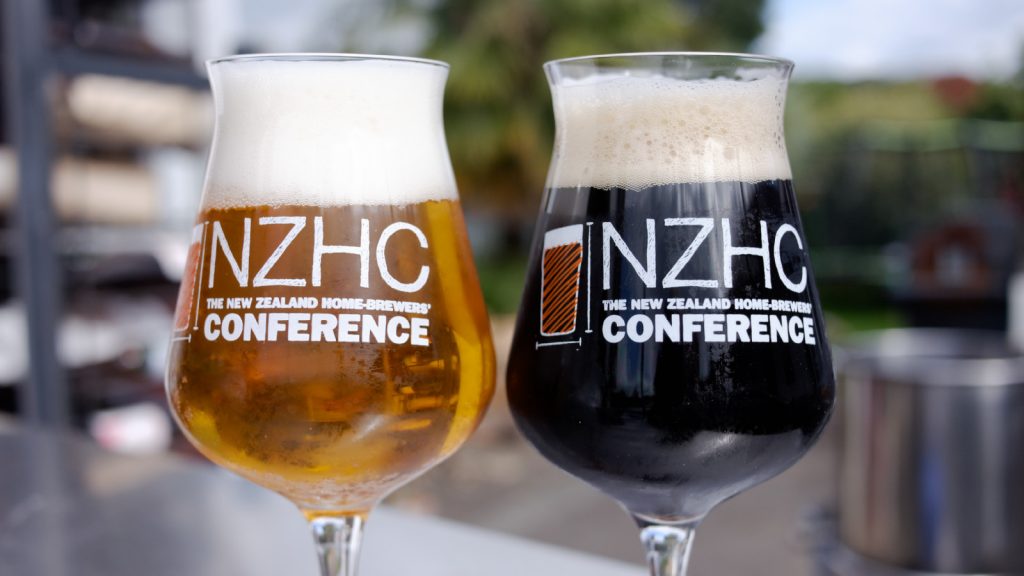
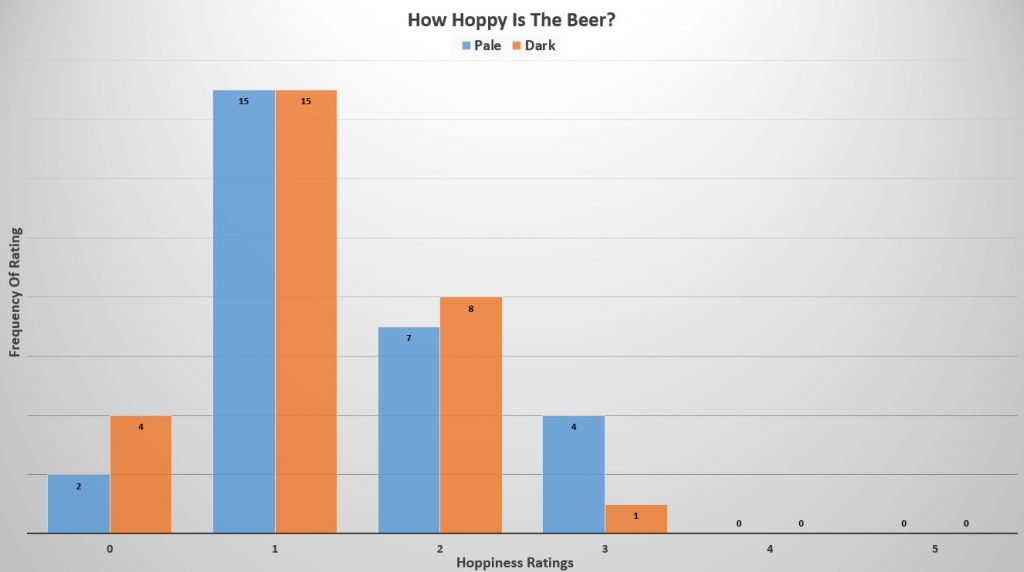
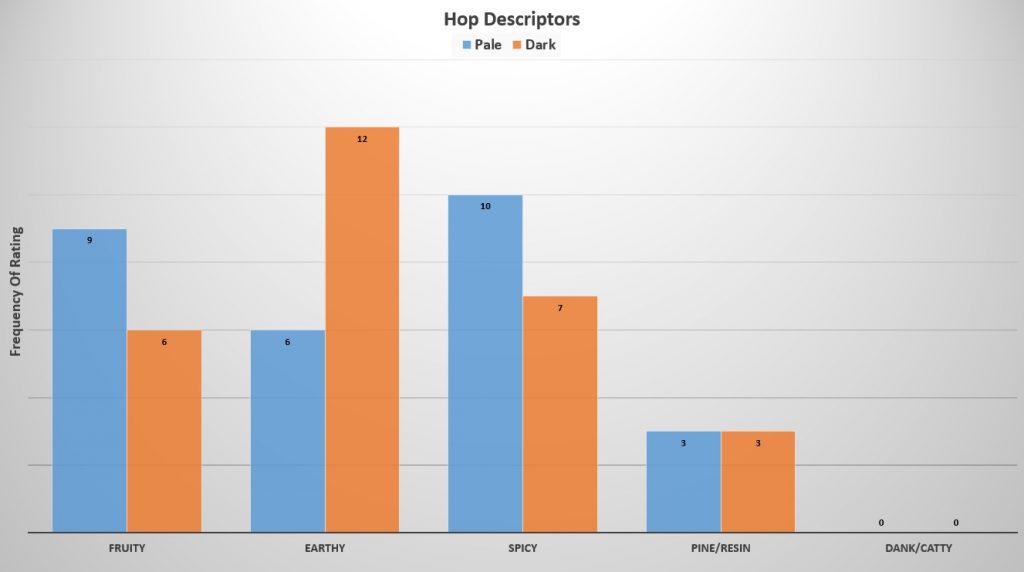
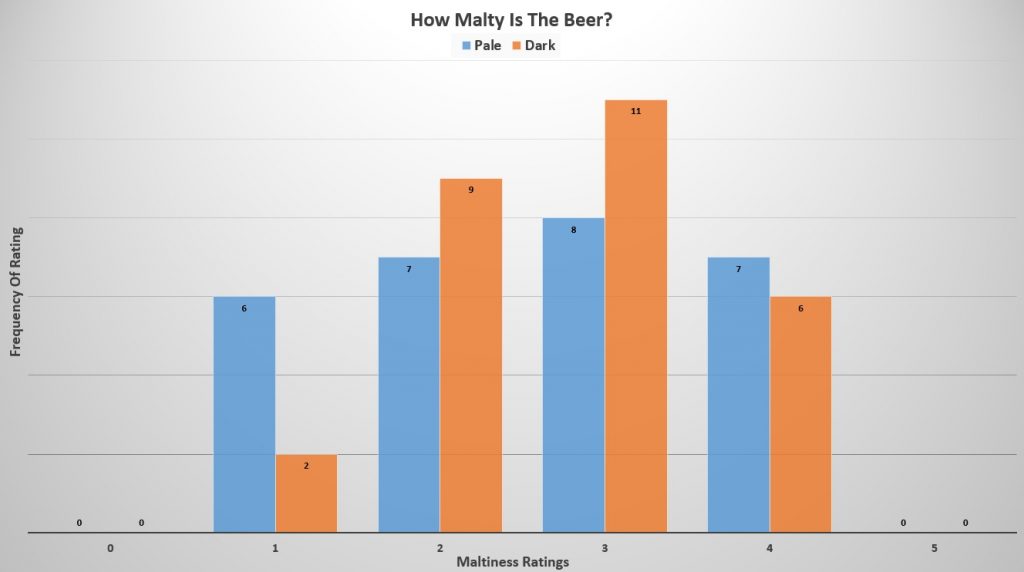
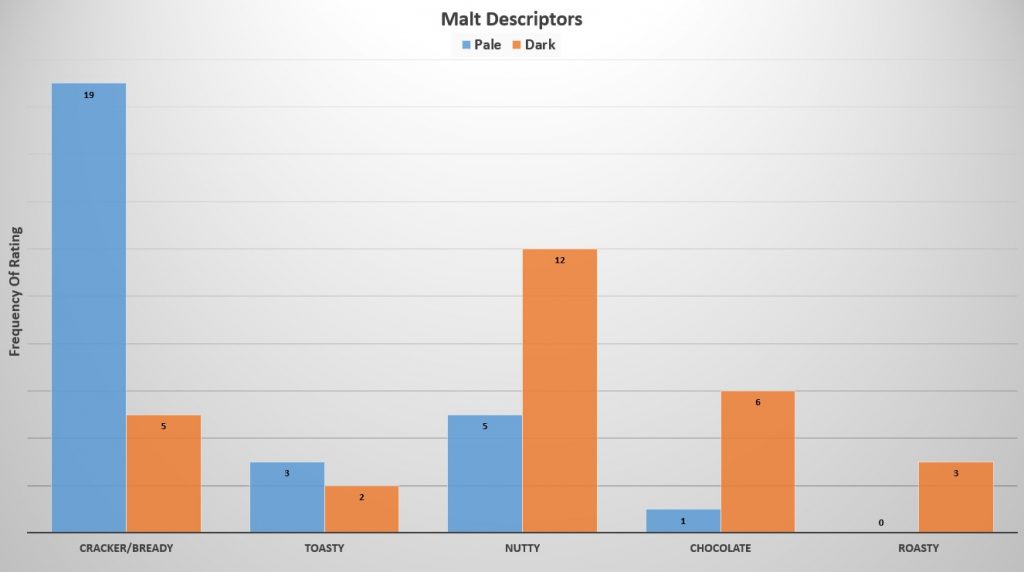
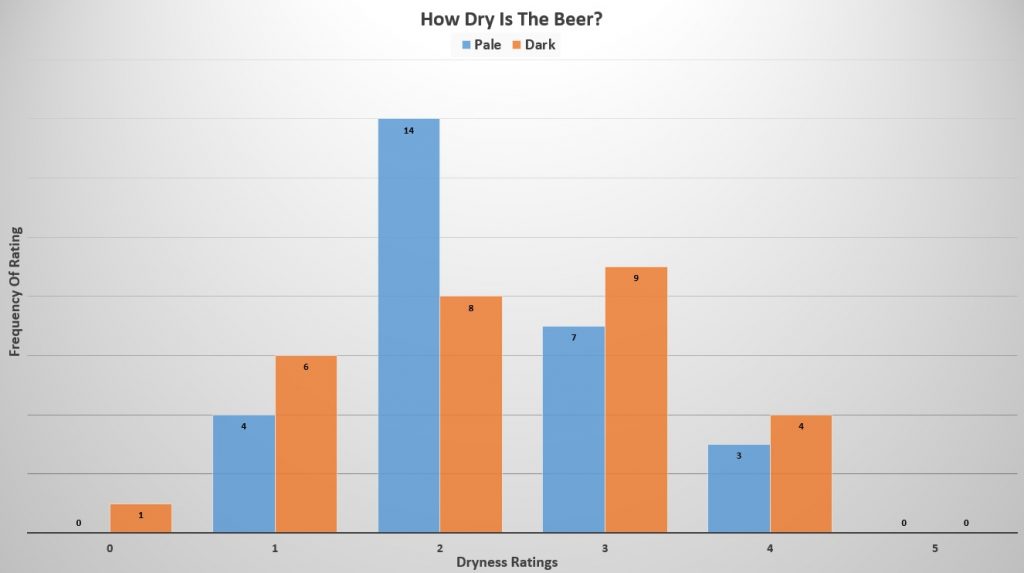
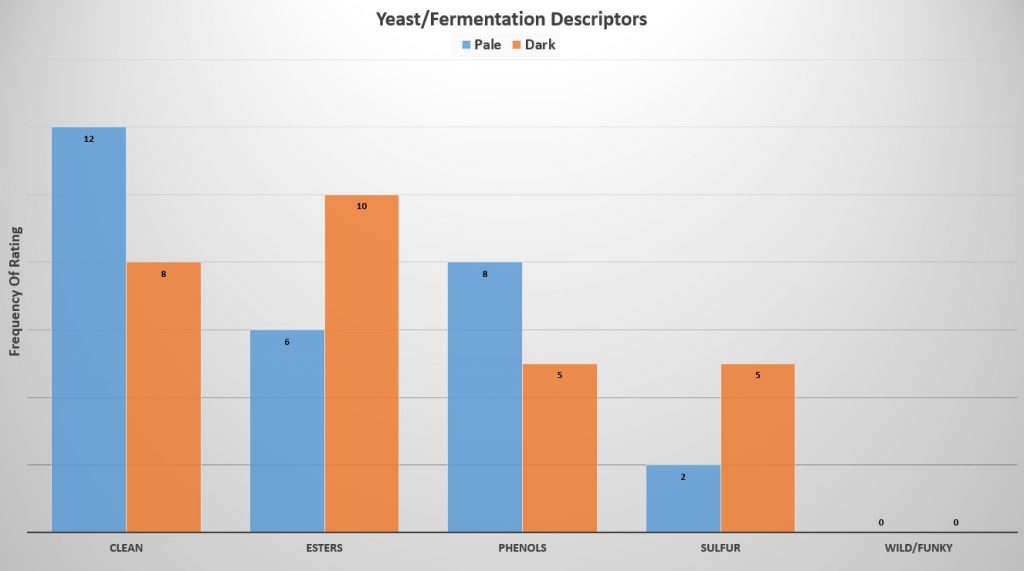
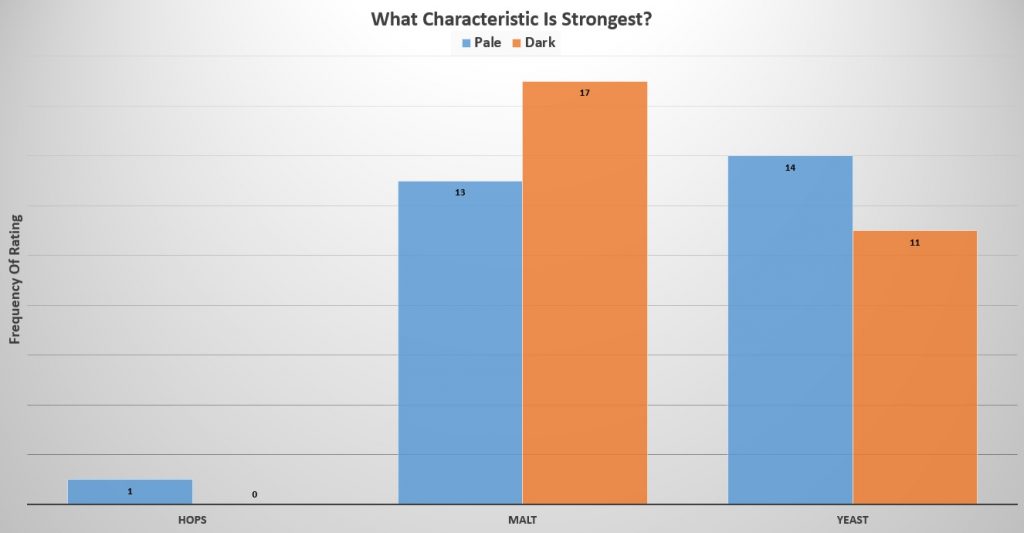
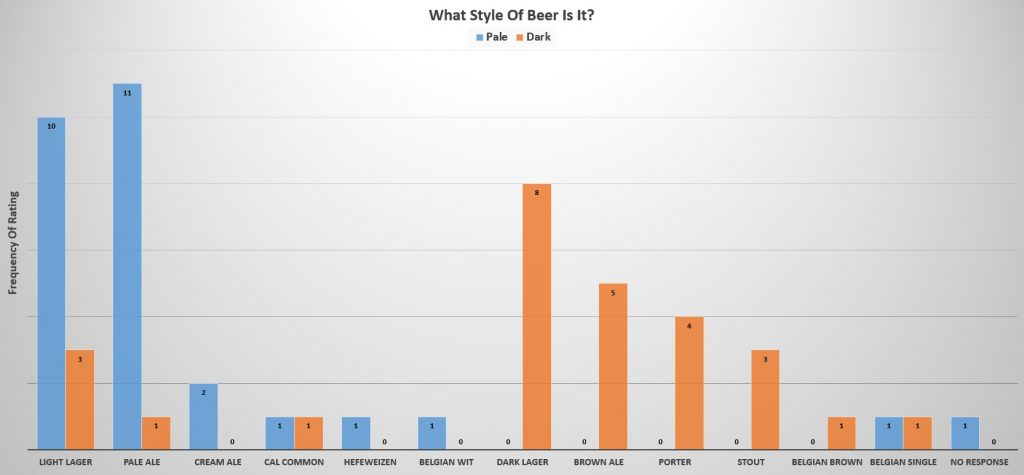










20 thoughts on “exBEERiment | Impact Appearance Has On Perception Of Other Beer Qualities”
That’s a pretty cool refractometer. The grainfather looks pretty sweet as well.
The style portion makes me think of some recent Brew strong episodes (Secret beers), I think you really have to know you’re stuff to guess a style. I will say that if you grouped the styles by BJCP group, cream ale is in the same grouping. I’d throw light lager and Cal common in there too. It’s kind of surprising so many people chose chose belgian styles or hefeweizen. You probably can’t derive any conclusions from that, but if you did the opposite (gave the style and guessed what people would guess), I wouldn’t have expected any of those. Is there maybe an ester from the hops that might cause confusion?
Bob Lutz, the famous car exec once said that he never liked doing customer surveys because when asked, people will always tell you what they think is expected of them, instead of what they really think. I think this experiment proves his point. Great article.
Good article, I enjoyed this one. Kind of reads like an advertisement for a Grainfather, but I already brew on one so I don’t mind, it’s a great machine. The more experience I get in this hobby and the more exBEERiments I read on this site the more inclined I am to believe that people are really bad at tasting beer. It is very interesting.
Could the style confusion be due to an almost non existent blonde ale here in New Zealand?
And when we think pale ale, our heritage thinks English first unless indicated with American Pale Ale.
Could totally be, Mark.
I’d agree with this. I’m not sure I’ve ever had a blond ale, and couldn’t name a commercial example here in NZ. If I were to guess what one would taste like, I’d assume it would be pale ale/larger-y
I would agree with your comment. Blonde Ales are a not really a relevant style in NZ & OZ. A ‘blonde ale’ really could be anything. Pack the beer full of kiwi hops and I would have picked ‘pale ale’ too.
It’s funny, I use this methodology to create my Red IPA. If you boil down the BJCP guidelines for Red IPA, it actually seems like it should drink just like a regular IPA except for the red color. Because of this, I decided to use one of my best IPA recipe’s and simply color the wort with a very small amount of chocolate malt, which imparts no flavor at all. It’s been very well received within my club as an example of how to brew that beer to style. No extra crystal malt, nothing fancy…
…It’s literally just a “colored” IPA. haha
Perception is theory laden, as my philosophy professor would say, and your site proves that point constantly. We are not Lockean blank slates and our senses are not data collection devices. Many times believing is seeing (not the other way around) – you believe something and therefore taste/see/smell it. Almost never do we taste beer blindly, we are always given expectations and context, and we go from there. Never does someone hand you a beer without context. What I mean is: brilliant experiment!
Akin to the Bob Lutz reference, I recall an episode of Candid Camera where they had folks taste a new soda both off and on camera. The soda was orange but spiked with garlic juice and other nasties. Those sampling when the camera was hidden made faces, gagged, and exclaimed that it was awful…but the moment they brought the camera into view and were instructed to “taste, look right into the camera, and tell us what you think”, the samplers couldn’t say enough good about it, all while trying to smile thru obvious displeasure. So now I’m wondering if those who regularly partake of my carefully constructed brews really like them, or if they’re just being nice! Guess I could always charge for pints from my taps and see if they suddenly start showing up with their own coolers…
Marshall, did you run any stats to see if the distributions of flavor descriptors, etc. were statistically different between the two groups?
I haven’t… yet.
What made you mistakenly think that Sinamar is flavorless? Weyermann makes no such claim and simply says it’s made from Carafa roasted malt and it’s filtered to reduce the bitterness. Did you try tasting a sample of the extract? We’ve done this experiment in our club and realized that it provides a clean roasty maltiness but that it’s far from flavorless. (Source: https://www.weyermann.de/eng/produkte.asp?idkat=26&umenue=yes&idmenue=&sprache=2)
Brewers’ caramel is much better then. I’ve used it to colour stuff before (like making a really light porter that is naturally amber).
I am very interested in that sparge set up. How are you measuring the amount of water you are using the sparge?
The urn holds 17.5 L and the water is treated with lactic acid to get the pH below 6. It has a sight-glass marked in 1 L increments up to 16.5 L with another litre below the valve. The hoses are food grade silicon and the pump is a food grade DC pump. The controller is just an adjustable DC power supply plugged into a portable 12 volt supply. Using the valve on the pump outlet and the voltage adjust, the correct sparge flow rate is easy to set. Huge improvement over filling a jug from the urn or lifting it high enough for gravity feed.
Thanks Michael.
This Xbmt brings to mind behavioral economics research by Dan Ariely and discussed in Predictably Irrational. The chapter in which it occurs is subtitled, “Why the Mind Gets What It Expects.” In the interest of brevity, the experimenters at MIT ran sessions in a bar giving away Budweiser and MIT Brew. The MIT Brew was doctored with a few drops of balsamic vinegar. The experiment involved whether subjects were told what the difference was or not. Subjects preferred MIT Brew when not told of the doctoring but preferred the Bud when informed in advance of tasting. Of course, its hard *not* to improve Bud, but I think there may be a bit of this going on here. Folks just aren’t expecting blonde ale flavors in a dark beer. Brain gets confused.
I’m sorry I missed your session Marshall – sounds like you had a ball. For the record, I completed the test at League of Brewers, and was completely unable to detect a difference. I thought I might have kind of detected something, but when I took off the blindfold I was wrong 🙂
I think the Blonde Ale is a rare style down here. When I hear “Blonde Ale” I’m thinking Belgian…
You should be sorry, mate! 😘